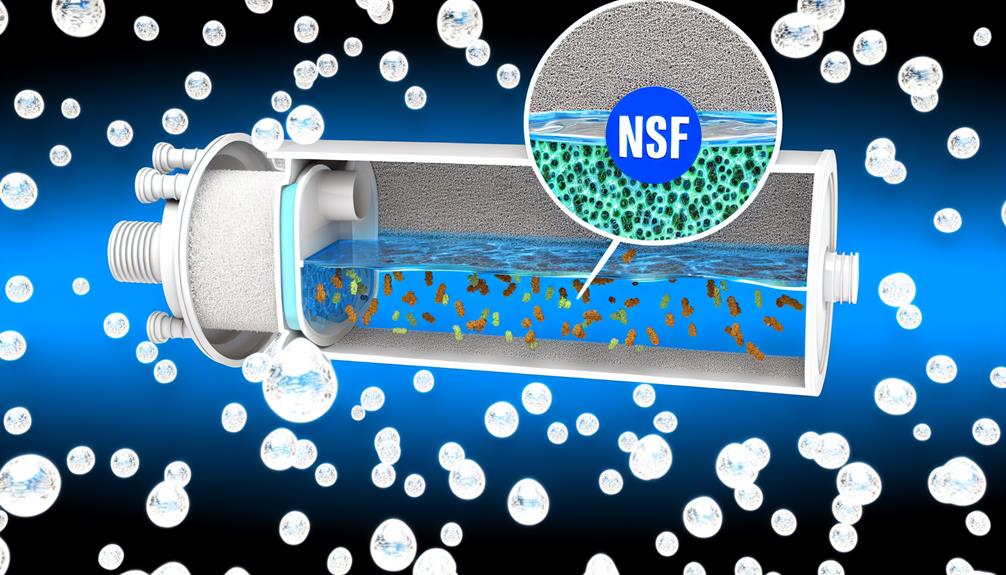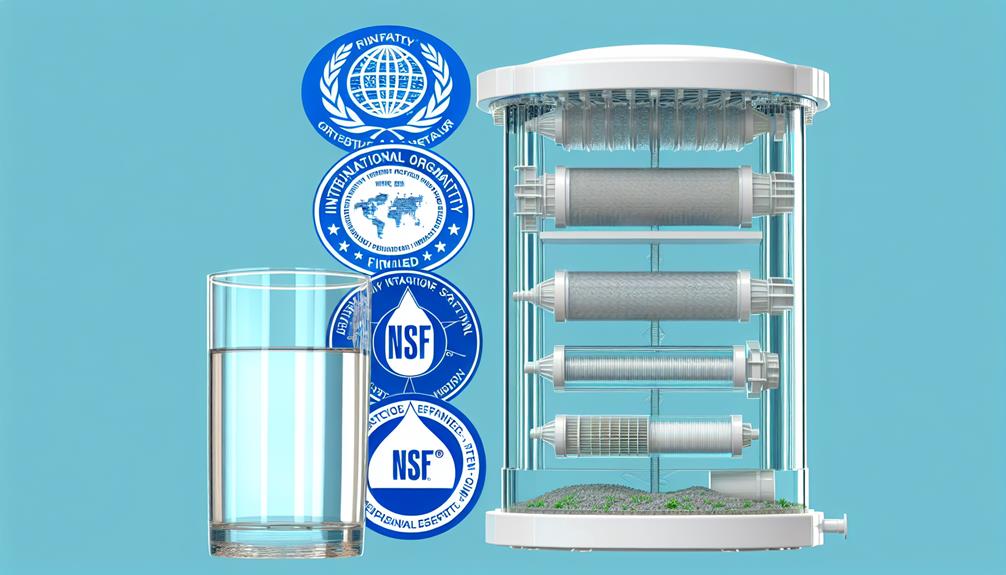When Flint, Michigan's water crisis hit headlines, you likely became more aware of the crucial role water purifiers play in ensuring safe drinking water. Now, you're faced with a market brimming with options, each claiming superiority, but it's vital to look for those that meet or exceed the Environmental Protection Agency's stringent guidelines.
As you consider safeguarding your family from contaminants, understanding the nuances of EPA compliance can be the difference between mere filtration and true peace of mind. This review scrutinizes six home water purifiers that not only boast EPA certification but also cater to diverse needs and preferences.
As you weigh the options, remember that the right choice hinges on more than just price and aesthetics; it's about the unseen intricacies of technology and compliance that protect your water quality every single day.
Stay tuned as we reveal which purifiers make the cut and why it matters to you.
Understanding EPA Standards
To ensure the safety of your drinking water, it's important to grasp the EPA's standards, which set the bar for water quality in public systems and guide homeowners in managing private well water. The Environmental Protection Agency (EPA) is your key ally in maintaining safe drinking water. Public water systems are mandated to adhere to the drinking water standards outlined by the Safe Drinking Water Act (SDWA), which stipulates maximum contaminant levels (MCLs) for various pollutants, including PFAS, PFOA, and PFOS—chemicals with potentially significant health implications.
As a homeowner, you should regularly review your Consumer Confidence Report (CCR), a document that details the quality of drinking water supplied by public systems. It informs you whether your water meets EPA's standards and if you should consider additional filtration measures. For those relying on private wells, the responsibility to ensure water quality rests solely on you, as the EPA doesn't regulate these sources.
Selecting NSF certified water filters can be crucial, as they meet stringent industry standards for contaminant removal. Filtration systems, both for public and private use, should effectively reduce or eliminate harmful substances, ensuring your water is safe to consume. Remember, employing a certified filtration system is a proactive step in safeguarding your household's health.
Certification Process Explained
Understanding the EPA standards is essential, and equally important is knowing how filtration systems earn the certification that aligns them with these benchmarks. The certification process explained begins when a manufacturer submits a product to a certifying agency to ensure it meets necessary criteria. This agency, such as NSF International, conducts rigorous testing by the certifying body to ensure that the product will perform as claimed.
During this process, the filtration system undergoes independent analysis to verify that it can comply with an accepted standard specific to contaminant reduction. These standards define how effectively a purifier must remove certain contaminants to be considered safe for use. For a system to be independently tested and found compliant, it must be certified for the removal of specific impurities as claimed by the manufacturer.
Furthermore, products like home water purifiers might undergo additional evaluations like WaterCheck from National Testing Laboratories, which provides a broad assessment of a system's effectiveness against a variety of contaminants. It's crucial to check that the system you're considering is certified for the removal of contaminants its certified label claims to address. This ensures a level of safety and performance that aligns with EPA's drinking water quality guidelines.
Impact on Water Quality
Home water purification systems play a pivotal role in enhancing the quality of drinking water by removing harmful contaminants and impurities. The presence of regulated contaminants like lead and PFAS in drinking water can pose significant health risks. A filtration system equipped with activated carbon, for instance, is adept at reducing chlorine taste and odor, while also being certified to remove a range of organic compounds and chemicals.
When you're considering a water treatment solution, reverse osmosis systems provide a more comprehensive defense, filtering out a broad spectrum of contaminants, including those not always covered by standard regulations. They can significantly lower concentrations of PFAS and other pollutants, delivering water that not only meets but often exceeds regulatory standards for Water Quality.
However, the efficacy of these systems isn't indefinite. Filter life is a critical consideration; regular maintenance and timely filter replacement are fundamental to sustain the protection against health risks. You should evaluate your specific water quality issues by reviewing your local Consumer Confidence Reports (CCRs), which could influence the type of filtration system you choose.
With the right system in place, you'll ensure that the water you and your family consume is consistently safe and pure.
Top EPA Compliant Purifiers
Selecting a top EPA-compliant water purifier ensures that you're investing in a system tested and verified to meet rigorous industry standards for contaminant removal. While you, as a homeowner, aren't subject to the exact regulatory requirements as public water systems in the United States, you can still benefit significantly from using filtration systems that have been certified.
Certification programs such as NSF International play a crucial role in ensuring that water purifiers live up to water filter ratings and are capable of reducing harmful contaminants like PFAS and PFOA. These substances have been a growing concern for drinking water safety, and EPA-certified labs conduct stringent testing to verify that filtration products are up to the task.
When you're in the market for a purifier, you'll encounter options like water pitchers, under-sink filters, and Faucet-Mounted Water systems, each with their own set of certifications and performance data. Analytically speaking, it's essential to compare these products based on their certified removal rates and the types of contaminants they can effectively reduce.
You want a purifier that not only claims to improve water quality but has the backing of an EPA-certified lab to prove it. This objective, informed approach will guide you to a reliable choice for your home's drinking water.
Maintenance and Compliance Tips
To maintain the efficacy of your water purifier, it's crucial to adhere to a regular maintenance schedule and stay informed about both national and local water regulations. Ensuring your system operates properly involves more than just setup; you must actively manage and comply with certain standards.
Here are key maintenance and compliance tips:
- Regularly Replace Filters: To ensure optimal water filtration, replace filters according to the manufacturer's guidelines or when the filter-life indicator signals. Delayed replacement can compromise the ability to reduce PFOA and other contaminants.
- Choose Certified Systems: Look for systems certified by reputable organizations such as the National Testing Laboratories. Certified systems meet stringent standards for contaminant removal and flow rate, providing assurance of their effectiveness.
- Monitor with Ultraviolet Light: Some advanced purifiers use ultraviolet light to kill bacteria and viruses. Regularly check the UV light functionality to maintain water safety, especially if you're using under-sink water purifiers.
Staying analytical and objective, remember that maintenance goes hand-in-hand with compliance. Always review your Consumer Confidence Reports (CCRs) to understand your local water quality and tailor your maintenance to address any specific issues.

